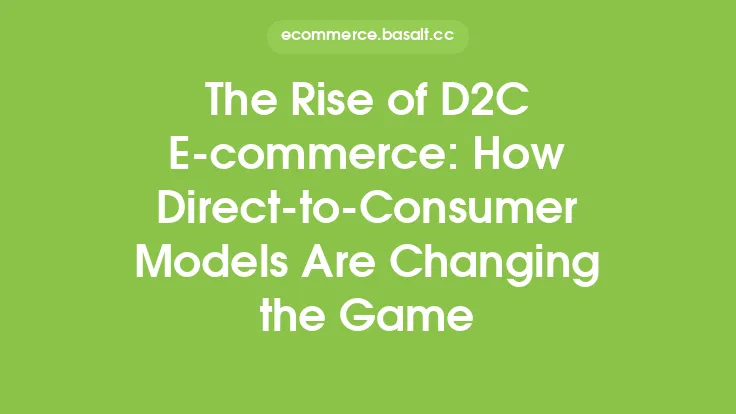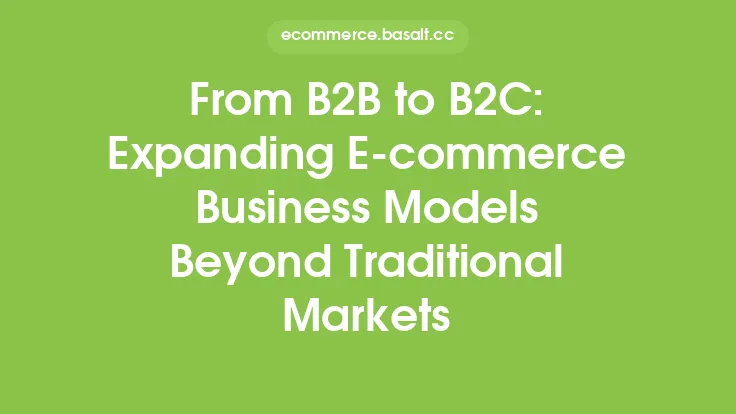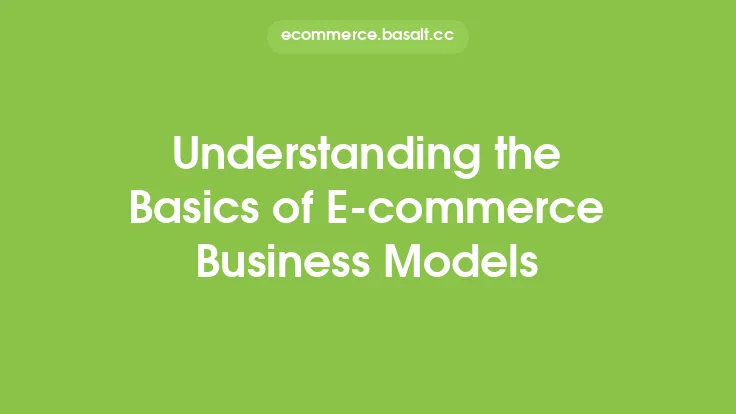The rise of e-commerce has led to the development of various business models, each with its unique characteristics and advantages. One such model that has gained significant attention in recent years is the Direct-to-Consumer (D2C) business model. This model involves companies selling their products or services directly to the end-consumer, bypassing traditional intermediaries such as wholesalers, distributors, and retailers. By cutting out the middleman, D2C companies can establish a direct relationship with their customers, gather valuable data and insights, and create a more personalized and engaging shopping experience.
What is the Direct-to-Consumer (D2C) Business Model?
The D2C business model is a strategy where companies produce and distribute their products or services directly to the end-consumer, without relying on intermediaries. This approach allows companies to have complete control over the production, marketing, sales, and distribution of their products, enabling them to create a seamless and integrated customer experience. D2C companies can sell their products through various channels, including their own websites, social media, online marketplaces, and physical stores.
Benefits of the Direct-to-Consumer (D2C) Business Model
The D2C business model offers several benefits to companies, including:
- Increased profit margins: By eliminating intermediaries, D2C companies can retain a larger share of the revenue generated from sales.
- Improved customer insights: Direct interaction with customers provides valuable data and insights, enabling companies to better understand their needs and preferences.
- Enhanced brand control: D2C companies have complete control over the brand experience, allowing them to create a consistent and engaging brand image.
- Faster product development: With direct feedback from customers, D2C companies can quickly respond to market trends and develop new products that meet customer needs.
- Reduced distribution costs: By selling directly to customers, D2C companies can reduce their distribution costs and improve their overall efficiency.
Key Characteristics of Successful D2C Companies
Successful D2C companies share certain characteristics, including:
- Strong brand identity: A clear and compelling brand image that resonates with customers.
- High-quality products: Products that meet customer needs and exceed their expectations.
- Engaging customer experience: A seamless and integrated shopping experience that creates a lasting impression on customers.
- Data-driven decision making: The ability to collect and analyze customer data to inform product development, marketing, and sales strategies.
- Agility and adaptability: The ability to quickly respond to market trends and customer feedback.
Challenges and Limitations of the D2C Business Model
While the D2C business model offers several benefits, it also presents certain challenges and limitations, including:
- Higher marketing and advertising costs: D2C companies need to invest heavily in marketing and advertising to reach and engage with customers.
- Increased logistical complexity: Managing the production, storage, and distribution of products can be complex and costly.
- Higher customer service expectations: D2C companies need to provide exceptional customer service to build trust and loyalty with customers.
- Intense competition: The D2C market is highly competitive, with many companies vying for customer attention and loyalty.
Examples of Successful D2C Companies
Several companies have successfully implemented the D2C business model, including:
- Warby Parker: An eyewear company that sells stylish and affordable glasses directly to customers through its website and physical stores.
- Dollar Shave Club: A company that sells affordable razors and grooming products directly to customers through its website and subscription service.
- Casper: A mattress company that sells high-quality mattresses directly to customers through its website and physical stores.
- Glossier: A beauty company that sells high-quality skincare and makeup products directly to customers through its website and physical stores.
Best Practices for Implementing the D2C Business Model
To successfully implement the D2C business model, companies should follow certain best practices, including:
- Develop a strong brand identity: Create a clear and compelling brand image that resonates with customers.
- Invest in high-quality products: Develop products that meet customer needs and exceed their expectations.
- Create an engaging customer experience: Design a seamless and integrated shopping experience that creates a lasting impression on customers.
- Collect and analyze customer data: Use data and insights to inform product development, marketing, and sales strategies.
- Be agile and adaptable: Quickly respond to market trends and customer feedback to stay ahead of the competition.
Conclusion
The Direct-to-Consumer (D2C) business model offers several benefits to companies, including increased profit margins, improved customer insights, and enhanced brand control. However, it also presents certain challenges and limitations, such as higher marketing and advertising costs, increased logistical complexity, and higher customer service expectations. By following best practices and developing a strong brand identity, high-quality products, and an engaging customer experience, companies can successfully implement the D2C business model and thrive in a competitive market. As the e-commerce landscape continues to evolve, the D2C business model is likely to play an increasingly important role in shaping the future of retail and consumer goods.





